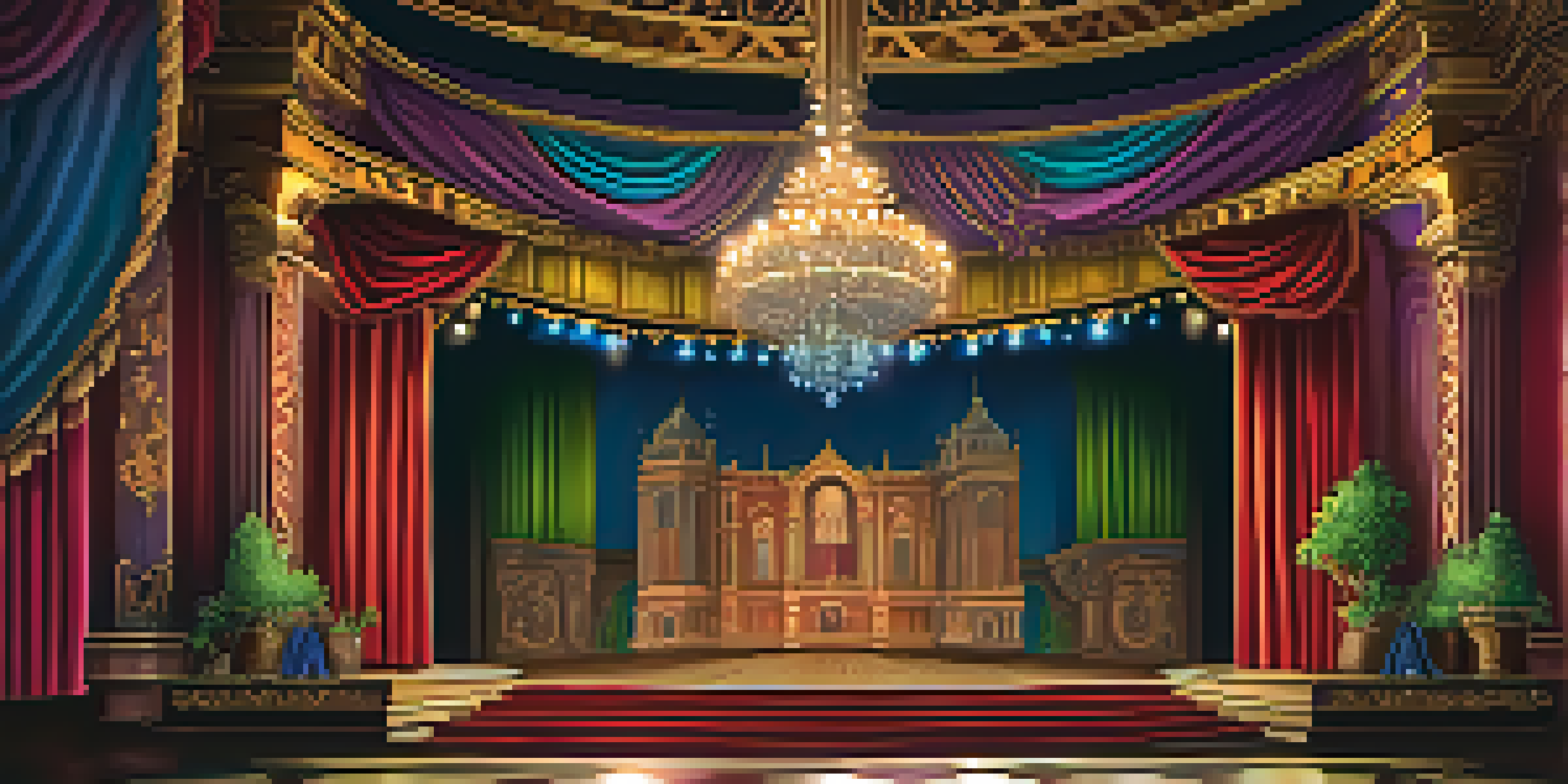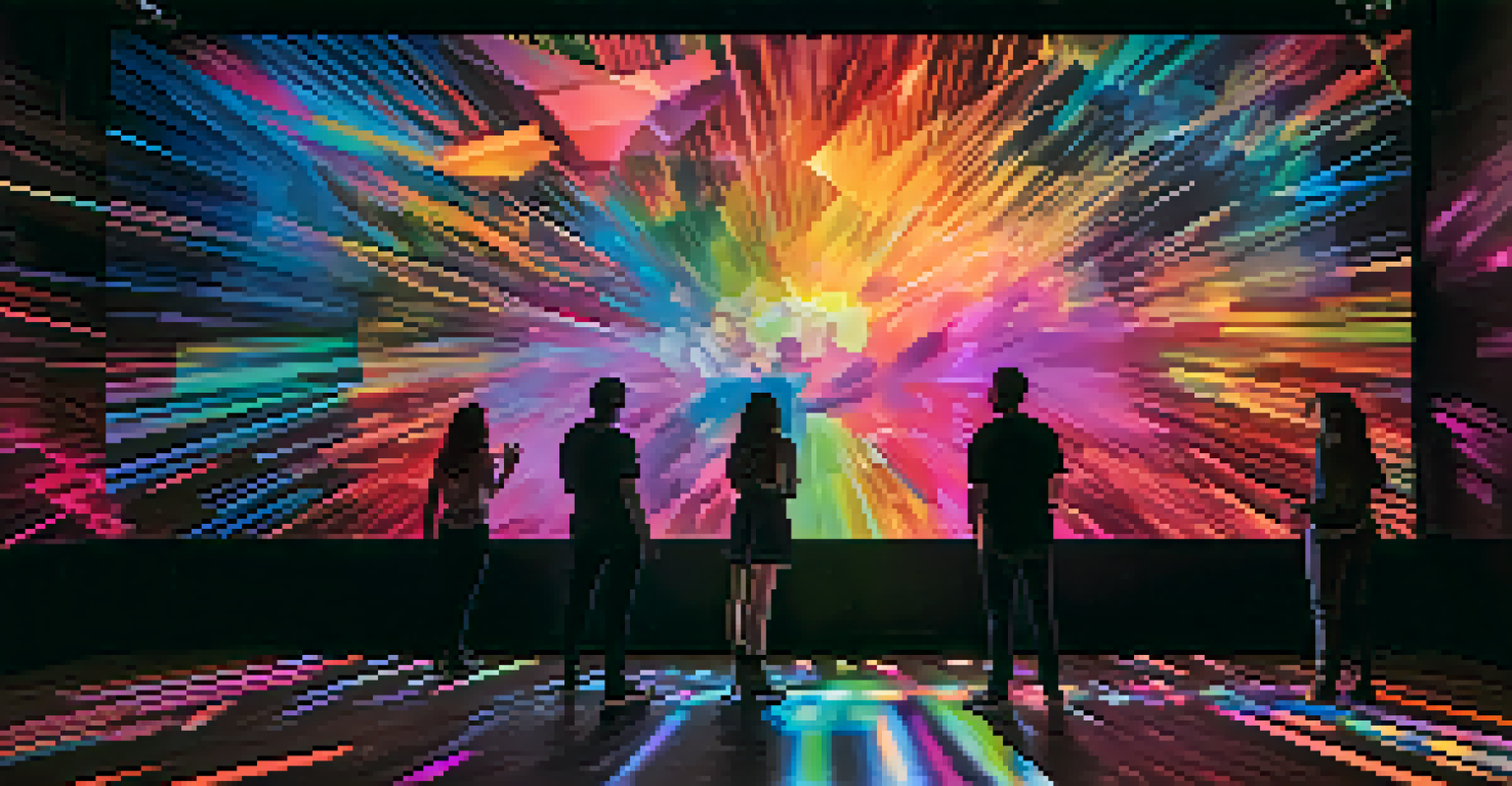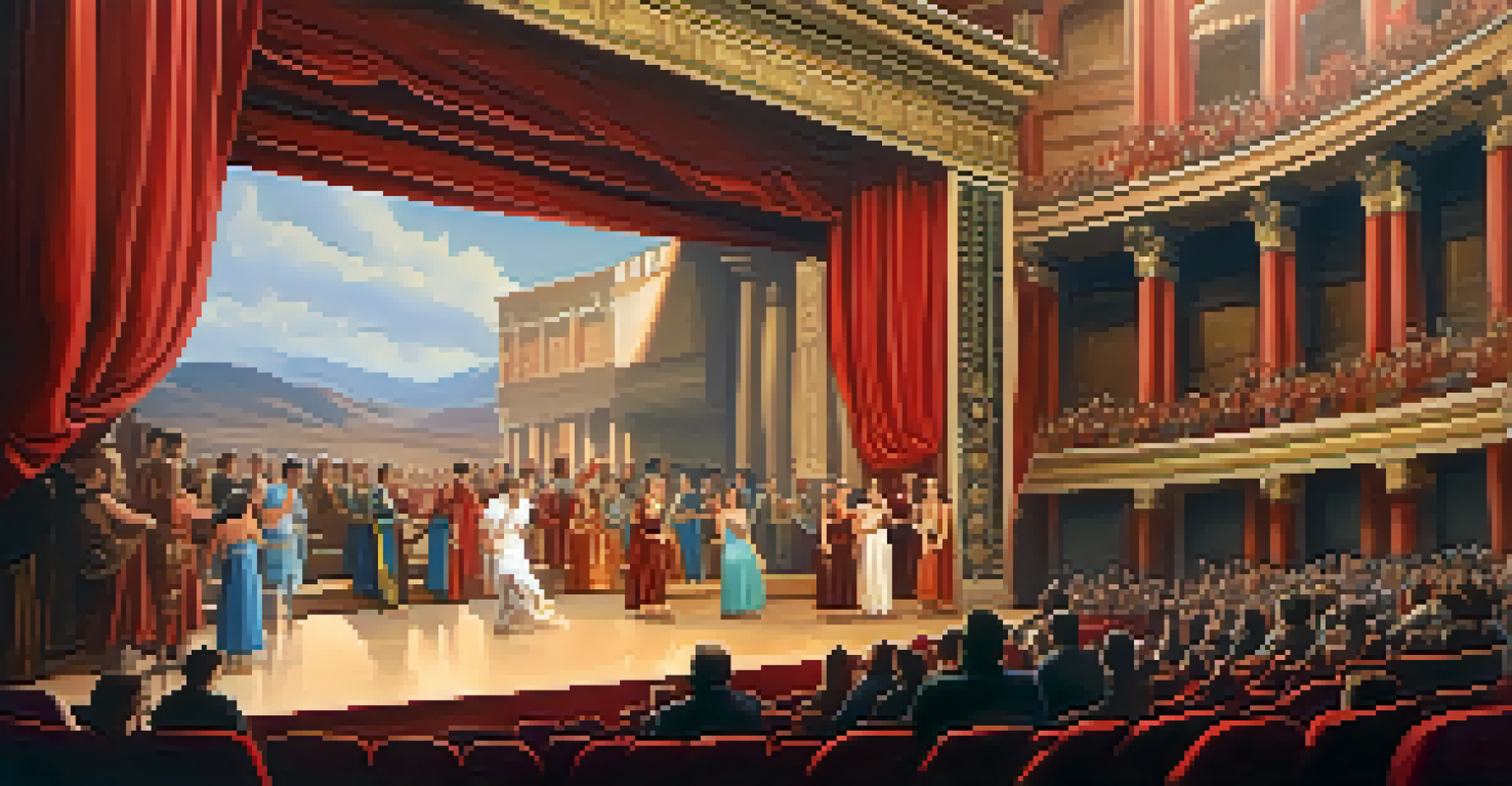Visual Art Meets Theater: Collaborative Projects Explained

Understanding the Intersection of Visual Art and Theater
Visual art and theater may seem like separate worlds, but they often intersect in fascinating ways. Both forms of expression share a common goal: to evoke emotion and provoke thought. When combined, they can create multi-layered experiences that captivate audiences and enhance storytelling. By understanding this intersection, we can appreciate how these art forms complement each other.
Art is the most beautiful of all lies; it is the truth of our hearts.
For instance, consider how a theater production might utilize a striking set design. This visual art element sets the tone and context for the performance, guiding the audience’s emotional journey. The visual components, from backdrops to props, play a crucial role in immersing viewers in the narrative. In this way, visual art becomes a silent but powerful partner in theater.
Moreover, collaborations between visual artists and theater creators can lead to innovative projects that push boundaries. Artists can experiment with lighting, projections, and even interactive installations, making performances more dynamic. This synergy not only enriches the audience's experience but also opens new avenues for creativity in both fields.
Historical Collaborations: A Look Back
The collaboration between visual art and theater isn't a new phenomenon; it has historical roots that date back centuries. One of the earliest examples is the use of elaborate stage sets in ancient Greek theater, where artists would paint backdrops to enhance dramatic storytelling. This practice laid the groundwork for future collaborations, showing how visual elements can amplify theatrical performances.

In the 20th century, movements like Expressionism and Surrealism began to influence theater, with artists such as Edward Gordon Craig advocating for a more integrated approach to stage design. Craig believed that the visual aspect should not merely support the narrative but should also possess its own artistic merit. This idea paved the way for more ambitious collaborative projects, merging the talents of playwrights and visual artists.
Art and Theater Enhance Each Other
Visual art and theater create immersive experiences, enriching storytelling and engaging audiences on multiple levels.
As we progressed into contemporary times, we see an explosion of innovative collaborations, from immersive theater experiences to multimedia performances. Artists like Robert Wilson have drawn heavily from visual art to create visually stunning pieces that challenge traditional storytelling. These historical precedents illustrate how the combination of visual art and theater has evolved and flourished.
Contemporary Examples of Collaborative Projects
Today, there are countless contemporary projects that showcase the fusion of visual art and theater. Productions like 'Sleep No More' by Punchdrunk are prime examples where the audience wanders through a labyrinthine space filled with striking visual elements that interact with the narrative. This immersive experience highlights how visual art can turn a theater performance into a participatory journey.
Theater is the art of looking at ourselves.
Another notable example is the work of the acclaimed artist Marina Abramović, who has collaborated with theater directors to create pieces that blur the lines between performance art and theater. Her projects often involve audience participation, drawing them into a visceral experience that challenges their perceptions. Such collaborations not only redefine the boundaries of both art forms but also invite audiences to engage with them in new and meaningful ways.
These contemporary examples demonstrate the dynamic nature of artistic collaboration. By combining their strengths, visual artists and theater practitioners create immersive experiences that resonate with audiences on multiple levels. The power of collaboration lies in its ability to transform traditional expectations and inspire new forms of expression.
The Role of Technology in Collaborative Art
In recent years, technology has played an increasingly vital role in the collaboration between visual art and theater. Digital media, projections, and interactive installations have opened up new possibilities for creative expression. Artists can now use technology to create stunning visual effects that enhance the storytelling experience, making performances more engaging and memorable.
For example, the use of projection mapping allows artists to transform ordinary surfaces into dynamic visual canvases. This technique can create breathtaking backdrops that change in real-time, responding to the actors' movements and the narrative's progression. Such innovations not only captivate audiences but also challenge traditional notions of stage design and performance.
Historical Roots of Collaboration
The collaboration between visual art and theater dates back centuries, evolving through various movements to create innovative projects.
Furthermore, technology facilitates collaboration across geographical boundaries. Virtual tools enable artists from different parts of the world to work together on projects, sharing ideas and resources. This collaboration fosters a global dialogue in the arts, resulting in diverse and innovative performances that reflect a wide range of cultural influences.
The Impact of Collaborative Projects on Audiences
Collaborative projects between visual art and theater can have a profound impact on audiences. When these two art forms come together, they create a richer, more immersive experience that resonates on multiple levels. Viewers are not just passive observers; they become active participants in a dialogue that challenges their perceptions and emotions.
For instance, an audience member attending a performance that integrates striking visual elements may leave with a deeper understanding of the themes presented. The interplay between visuals and narrative can provoke thought and inspire discussions long after the performance ends. This engagement is what sets collaborative projects apart from traditional theater experiences.
Moreover, audiences often find themselves more open to exploring complex themes when presented through a multi-faceted lens. The combination of visual art and theatrical storytelling encourages viewers to see familiar narratives in new ways, making art more accessible and relatable. Ultimately, these collaborations enrich the cultural landscape by fostering a deeper connection between artists and their audiences.
Challenges in Collaborative Art Projects
While the collaboration between visual art and theater is often rewarding, it also comes with its share of challenges. One major hurdle is the differing creative processes of artists from both fields. Visual artists may focus on individual expression, while theater practitioners often prioritize ensemble work and narrative structure. Finding common ground can be a delicate balancing act.
Another challenge involves logistical considerations, such as budget constraints and time limitations. Coordinating schedules and resources can be daunting, especially when multiple artists are involved. It's essential for all parties to communicate effectively and establish clear roles to ensure that the project runs smoothly.
Technology Fuels Artistic Innovation
Advancements in technology are expanding the possibilities for collaboration, enabling artists to create dynamic and interactive performances.
Despite these challenges, many artists embrace the collaborative process as an opportunity for growth and innovation. By navigating these obstacles together, they can create unique pieces that push artistic boundaries. The ability to overcome these challenges often results in groundbreaking work that reflects the beauty of collaboration.
The Future of Visual Art and Theater Collaborations
Looking ahead, the future of visual art and theater collaborations appears bright. As both fields continue to evolve, we can expect to see even more innovative partnerships that challenge conventional boundaries. With the rise of new technologies and platforms, artists have unprecedented opportunities to create immersive experiences that captivate audiences.
Moreover, the growing emphasis on interdisciplinary practices encourages artists to explore collaborations beyond traditional art forms. This trend opens up possibilities for exciting new projects that incorporate music, dance, and even digital art. The blending of these different mediums can lead to fresh narratives and artistic expressions that resonate with contemporary audiences.

Ultimately, the future of visual art and theater collaborations will depend on the willingness of artists to experiment and take risks. By fostering a spirit of collaboration and embracing new ideas, they can continue to create impactful work that inspires and engages audiences. The journey ahead promises to be filled with creativity, exploration, and artistic discovery.